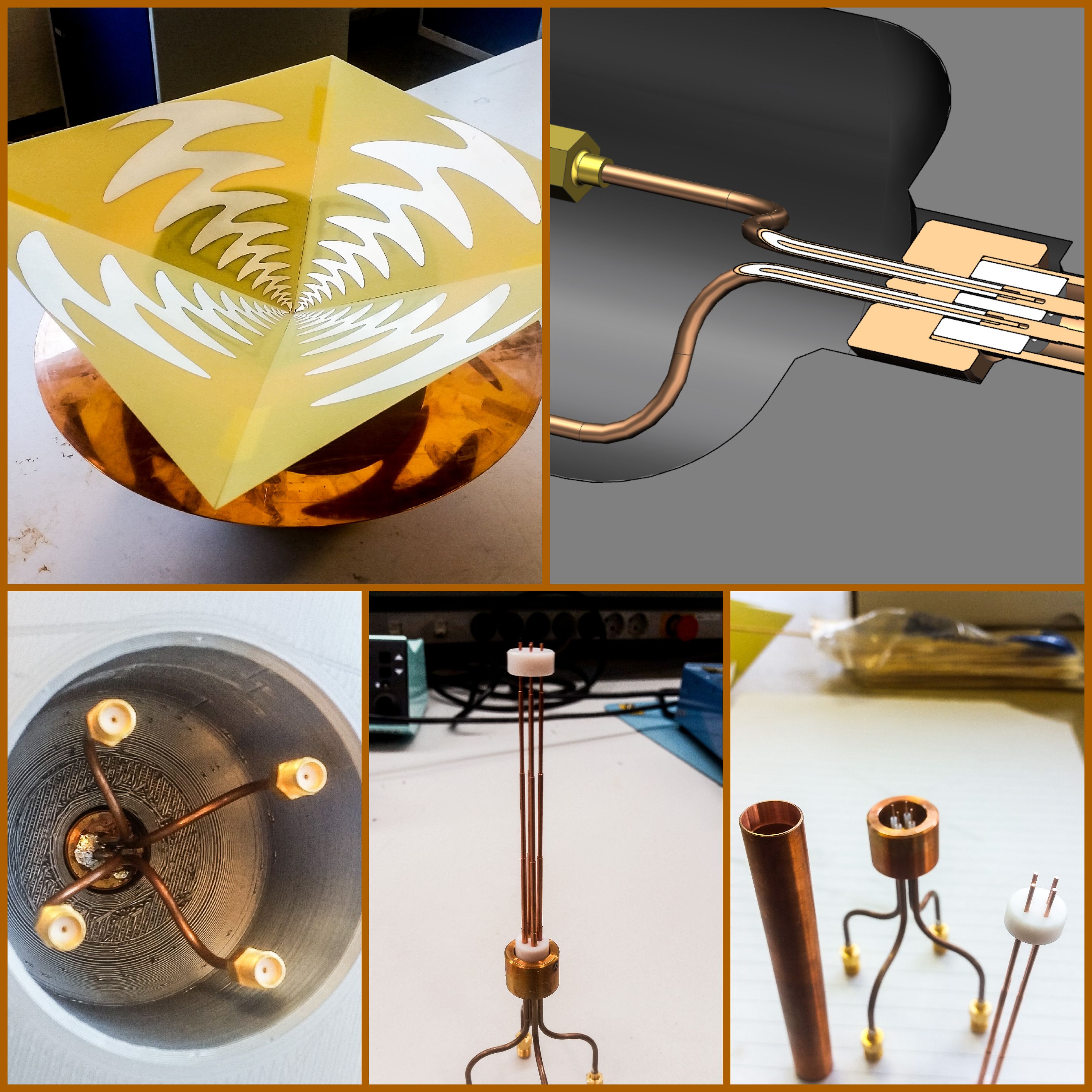Daily Image
09-03-2020The making of…A pyramidal sinuous antenna for the Westerbork Synthesis Radio Telescope
| Submitter: | Jorrit Siebenga |
| Description: | Around thirty years after conception, the Multi Frequency Front End (MFFE) fitted to one of the 14 Westerbork Synthesis Radio Telescopes’ (WSRT) reflector antennas, is still dutifully serving the European Very Long Baseline Interferometry Network (EVN). Recently, Odysseas Votsis, a Master’s graduate with Eindhoven University of Technology investigated the feasibility of using a wideband single pixel feed on the EVN WSRT reflector antenna. To this end, Odysseas designed a pyramidal sinuous antenna (shown in the top-left image) operating over the frequency range from 1 GHz up to 8.5 GHz, effectively combining multiple MFFE bands into a single antenna. As with many things, the increased bandwidth does not come free. In addition to the electromagnetic design challenges, the feed-network of this sinuous antenna presented some unique manufacturing challenges. This design required a three-section uniform taper impedance matching network implement in an air-core quadraxial transmission line. (Try saying that three times fast.) As the remainder of the images show, the design dimensions pushed the boundaries of our lathing manufacturing process (notice the stepped diameter of the vertical copper rods). Despite the manufacturing challenges, ASTRON’s mechanical workshop successfully designed and built the full setup according the required specifications. Ultimately, this work demonstrated the feasibility of a wideband single pixel feed on the WSRT, achieving more than 50% aperture efficiency (simulated) over the frequency band from 1 GHz up to 8.5 GHz. |
| Copyright: | Odysseas Votsis, Jorrit Siebenga, David Prinsloo (text) / ASTRON mechanical dept. (images) |
| Tweet |  |
